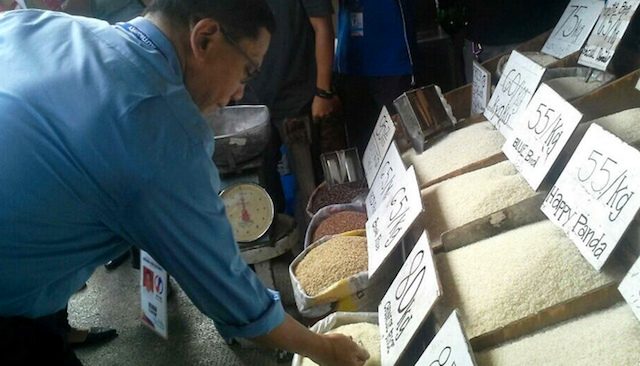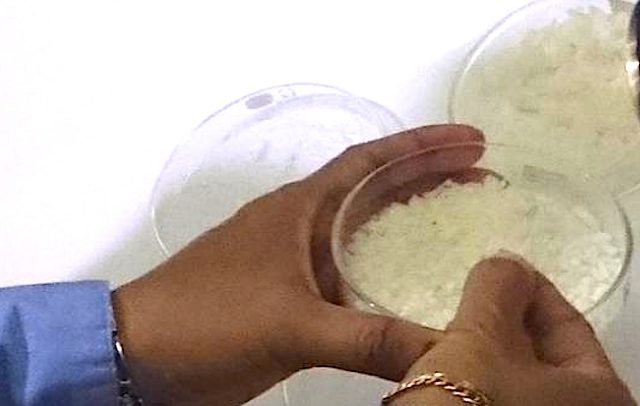SUMMARY
This is AI generated summarization, which may have errors. For context, always refer to the full article.

MANILA, Philippines – The alleged fake rice sample presented by a concerned citizen to authorities in Davao City contained a “plasticizer contaminant,” initial government tests showed.
The initial findings, however, are not conclusive yet to determine if the rice sample – which was provided by a concerned Davao resident to authorities – is indeed fake rice, the National Food Authority said on Friday, July 3.
Food Development Center Director Dr Jocelyn Sales bared the initial findings of her office in a news briefing with NFA Administrator Renan Dalisay and Secretary Francis Pangilinan, Presidential Adviser on Food Security and Agricultural Modernization, and other officials.
Sales said that FDC tests “showed the presence of a contaminant” in the cooked alleged fake rice.
Pangilinan said the samples were found to contain dibutyl phthalate (DBP), a plasticizer used for manufacture of cosmetics.
“There are still further tests needed to determine if there are resins so the test results are still inconclusive,” he said.
First to test positive for contaminant
Dalisay said the NFA has received reports of alleged fake rice but the Davao sample is the first to test positive for a contaminant.
“The test results are not yet conclusive but the NFA is not taking chances,” he said.
The FDC is conducting additional tests “to determine the chemical composition” of the sample.
The FDC, which is under the NFA, provides technical services, technologies and training to ensure the quality and safety of agricultural and fishery products for the export market.
Pangilinan said that the rice sample would be subjected to further tests to determine the amount of contaminant present. He also clarified that DBP would require a prolonged period of repeated ingestion, or several months, to have harmful effects.

“There is no reason to be alarmed, but there is reason to be vigilant,” he said, adding that the preliminary findings were disclosed to the public to promote vigiliance.
Further tests abroad
Dalisay said the NFA is “now focused on Davao City” and is cooperating with local officials and police to trace the source of the rice sample.
Dalisay said the NFA has coordinated with the DOH and the Food and Drug Administration to anaylze the starch content of the sample and determine the presence of heavy metals in the sample.
Some of the samples would have to be sent overseas as the Philippines does not have the proper equipment for conducting some of the succeeding tests.
The NFA had begun a nationwide inspection of rice stores, as it validates reports of fake rice sold in the country.
The sample from Davao City was provided by resident Carmencita Grinio, who reported to the NFA that she bought rice from Cuidad Esperanza canteen in Cabantian, Davao City. The cooked rice reportedly had the appearance of stypopor, a synthetic packaging material.
Ciudad Esperanza had denied it sold fake rice.
The NFA has reminded the public to distinguish between genuine and fake rice. One tip: cooked real rice gets sticky when pressed between the fingers, while fake rice crumbles.
Fake rice is reportedly made from potatoes, sweet potatoes, plastic, and materials found in pipes and cables. Its sale had been reported in countries like China, India, Indonesia, Malaysia, and Vietnam.
The NFA said reports on suspicious rice sold in the market can be relayed through NFA hotline 09064363133. – Rappler.com
Add a comment
How does this make you feel?
There are no comments yet. Add your comment to start the conversation.